
In the voids of warfare, where silence and hiding hold such importance, exists a specific type of warrior—one that isn’t dressed in armor. The Military Working Dog (MWD) has proven invaluable on the battlefield, with its function shifting from ancient messenger to contemporary specialist.
These battle-tested canine warriors’ heightened senses go beyond our own, alerting them to hazards that are unrecognizable by us. Their loyalty is unshakeable, and their bravery, unyielding.
Let’s discover nine types of MWDs as we learn what specialized job they do, what breeds are most appropriate for their role, and what lasting impact they’ve had in their history.
1. Patrol Dogs. – The Guardians of the Perimeter

Patrol dogs are the advance guard for the military, their alert nose and ears detecting trouble before human partners. Armed to apprehend invaders and repel hostile threats, these dog patrols serve vital functions in securing bases and combat in the urban battlefield.
Certain breeds like the German Shepherd and Belgian Malinois are optimal because they have strength, intelligence, and obedience. Having these patrols present in a potential area of conflict can deter disputes, exemplifying the mind-shaping function of a well-disciplined dog.
In addition to deterring threats, these patrol dogs can engage with them, protecting handlers and troops as well. Their reactive and proactive personalities makes them priceless in unstable environments.
2. Explosive Detection Dogs – The Nose That Knows
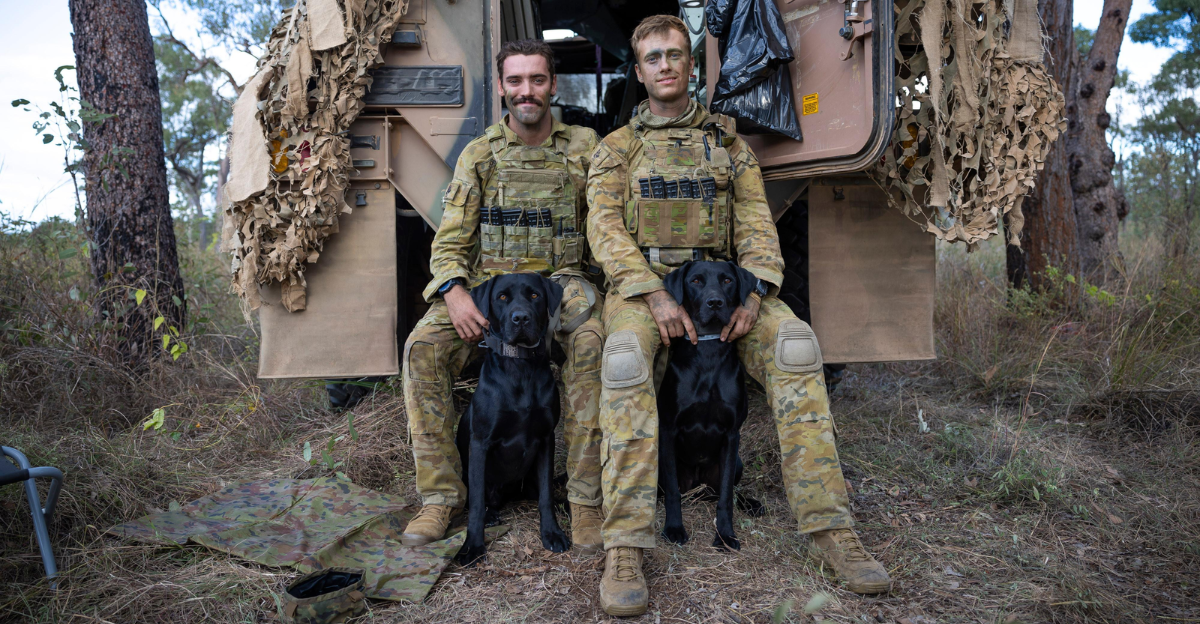
In an age where concealed explosives hang over every corner, ready to wreak havoc, Explosive Detection Dogs (EDDs) are the military’s last line of defense against them.
They train strenuously to sniff out a variety of explosive chemicals, sometimes under high-stress conditions. Labrador Retrievers, being highly scent-sensitive and relaxed, are traditionally used for the work.
Their services are most instrumental in securing checkpoints, clearing roads, and providing security to soldiers and civilians alike. An EDD and its handler have a strong relationship of trust and reliance as they walk through some of the most hostile terrain.
3. Narcotics Detection Dogs – The Scent of Security
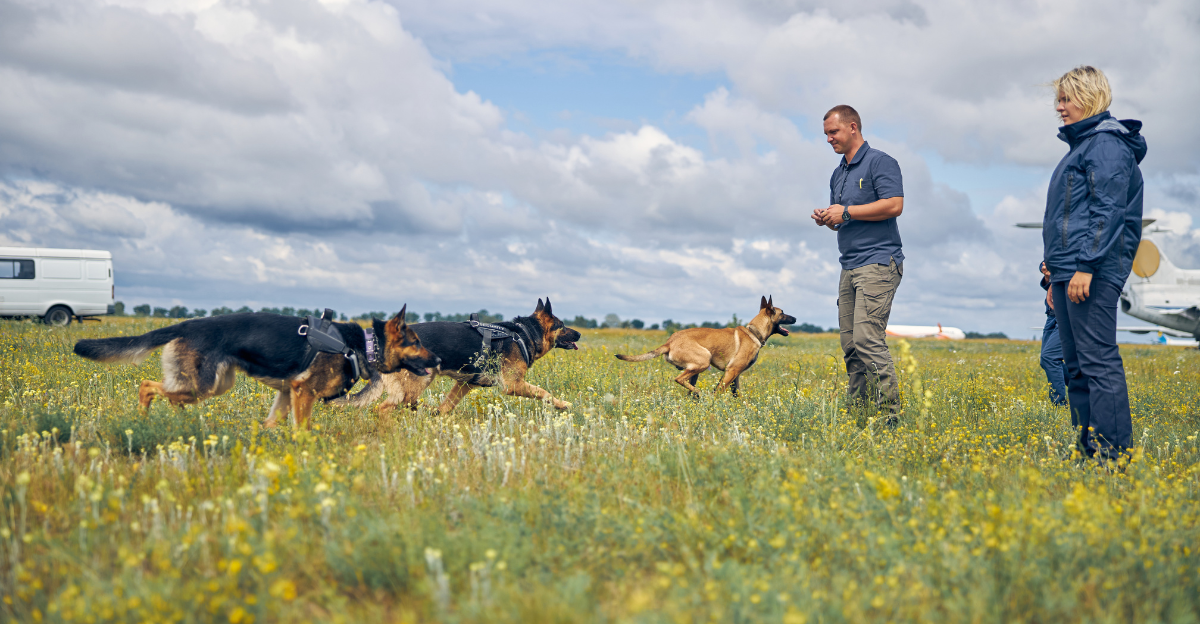
Piecing together the war against the illegal drug trade takes more than statistics; it takes the unrivaled sense of smell of Narcotics Detection Dogs. They are trained to sniff out all forms of narcotics, from marijuana to designer opioids, commonly concealed in innovative ways.
Breeds like the Springer Spaniel and German Shepherd are particularly suited to this career, athleticism and energy making them excellent for working in varied terrain.
Assigned to domestic and foreign operations, these canines are instrumental in intercepting drug shipments, disassembling trafficking rings, and keeping troops and facilities safe.
4. Search and Rescue Dogs – The Lifesaving Locators
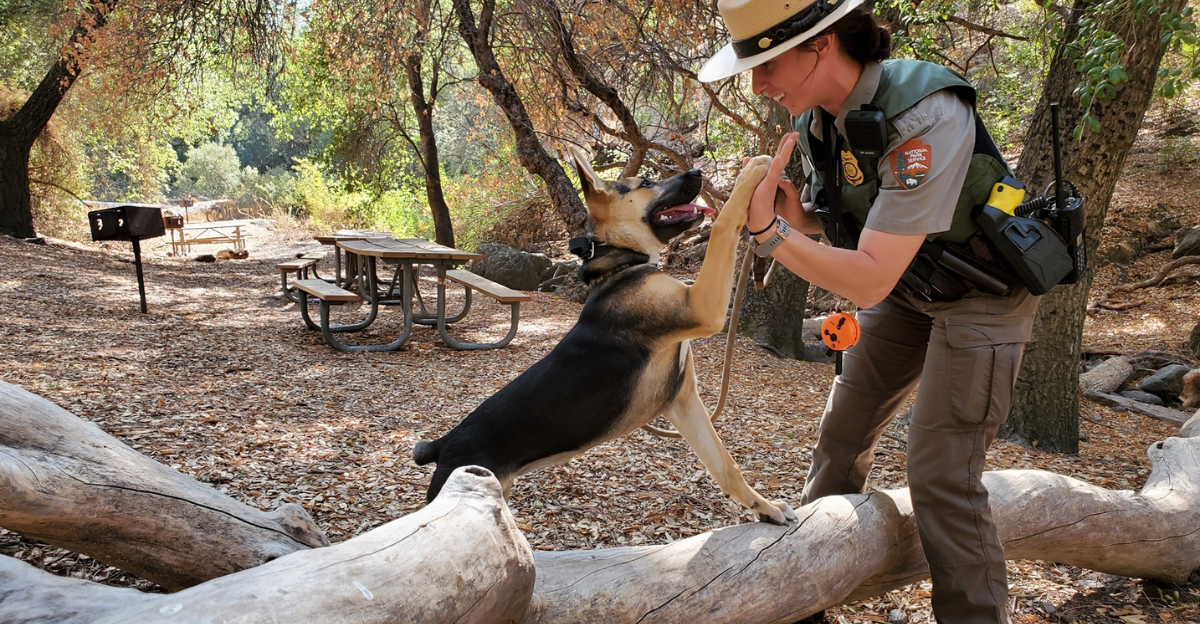
Time is crucial in the event of a disaster. SAR dogs are trained to locate missing individuals in all kinds of terrain, from earthquake debris to vegetation. Their strength, agility, and smell-discriminating abilities enable them to work under harsh weather conditions.
Excellent breeds that can be used include Border Collie and also the Golden Retriever due to their intelligence and amiable nature. These canines have been used in many rescue operations, their actions sometimes being the difference between life and death. Their single-mindedness and excellent senses render them priceless tools for both humanitarian and combat operations.
5. Combat Tracker Dogs – The Silent Pursuers
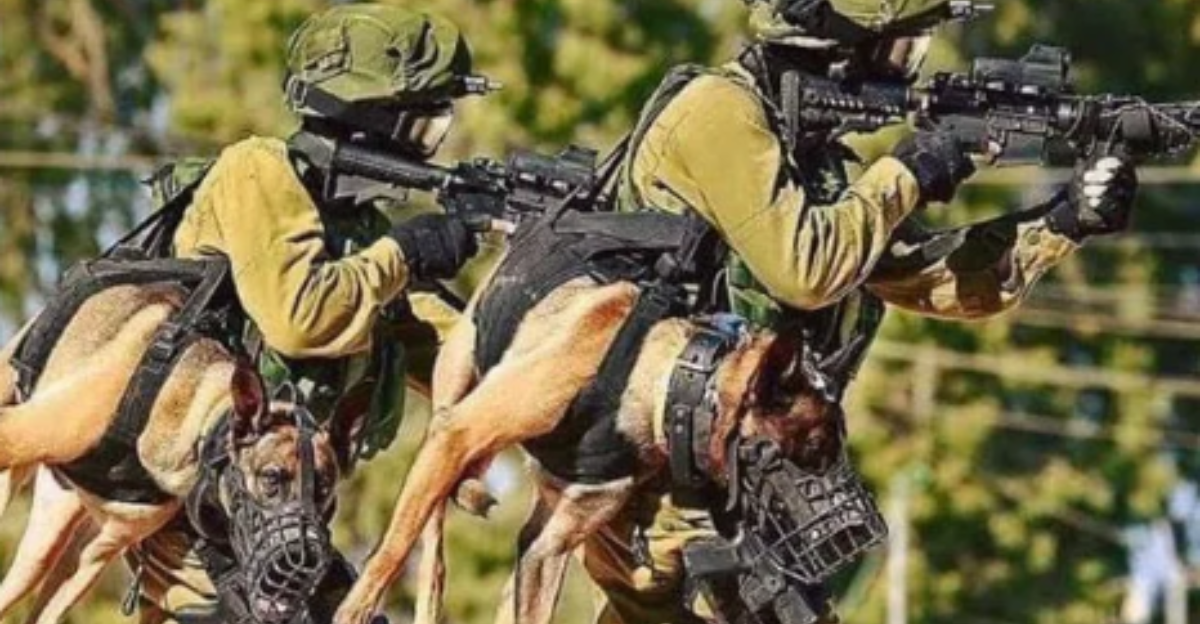
Combat Tracker Dogs (CTDs) are used to help follow enemy troops after an ambush or track human scent trails. Their training teaches them to locate and track detailed scents at extended distances even accross complex landscapes.
The Belgian Malinois, with its concentration and endurance is an optimal breed to handle this duty. CTDs offer tactical information in real time, which enables units to pre-estimate the travel of enemy forces and danger-intensive pursuits. Their quiet, efficient operation makes them indispensable to use in scout operations and danger-intensive pursuits.
6. Sentry Dogs – The Vigilant Watchers
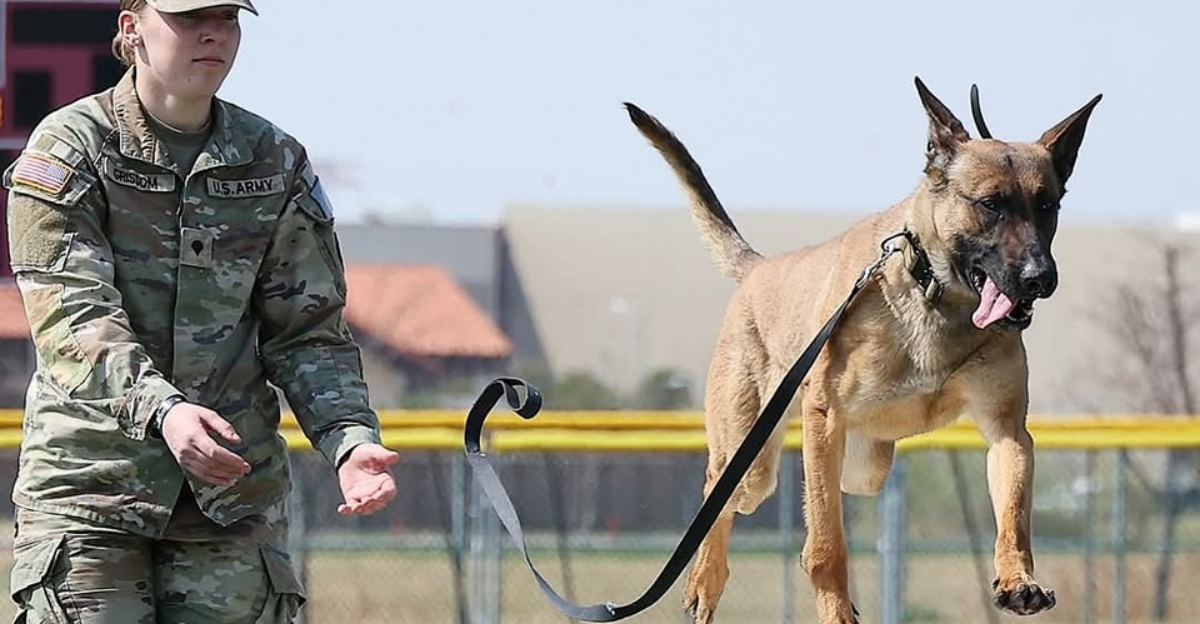
Sentry dogs are trained to defend particular sites, notifying their handlers of unwelcome intrusions. Their main function is deterrence, relying on their presence and vocal warnings to discourage intruders.
Their breeds, like the Rottweiler and Doberman Pinscher, are typically used because of their authoritative presence and alertness. Sentry dogs typically defend military bases, ammunition supply points, and other sensitive areas.
Their sharp hearing and nose enable them to sense threats long before humans can. As a psychological and physical obstacle, sentry dogs play a vital role in offering protection and order.
7. Tactical Dogs – The Special Forces’ Secret Weapon
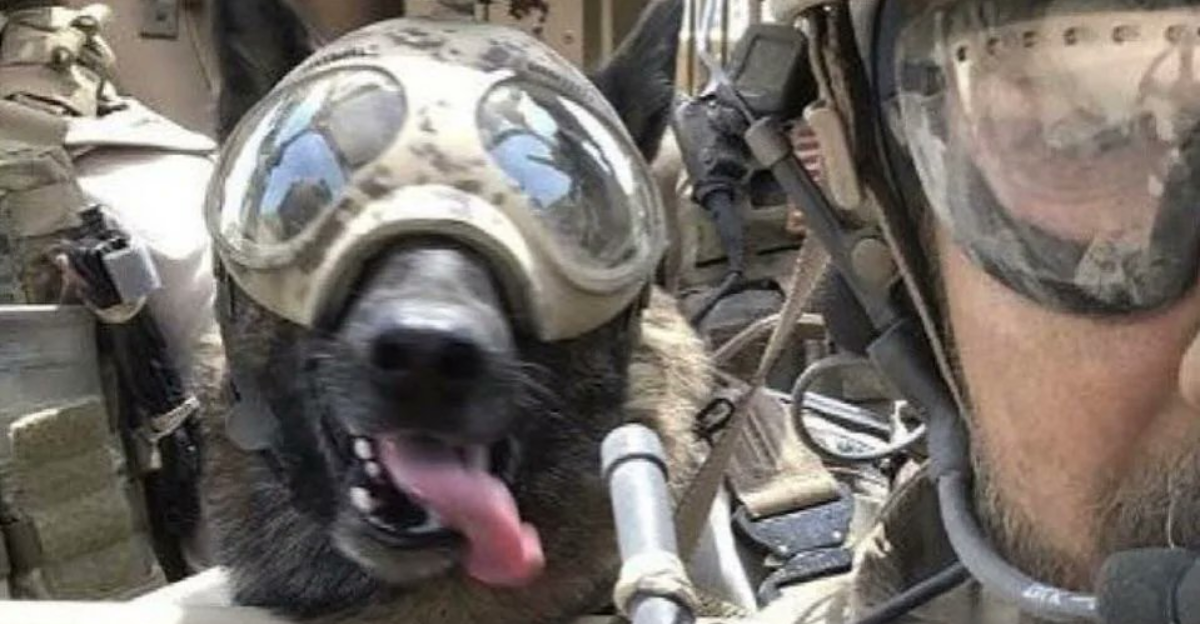
Tactical Dogs are well-trained in special forces commandos for sophisticated operations, i.e., hostage rescue, counter-terrorism operations, and combat operations on the front lines.
They are specifically trained to work with special forces at certain times with gadgets such as night-vision cameras and communication equipment. The Belgian Malinois is a favorite breed because of its agility, intelligence, and adaptability.
The dogs are parachute-dropped or rappelled, highlighting their versatility. Their presence complements the capabilities of special operations teams, adding uncharacteristic strengths in stealth, speed, and surprise, often determining the success or failure of high-risk missions.
8. Multipurpose Canines – The Jack-of-All-Trades
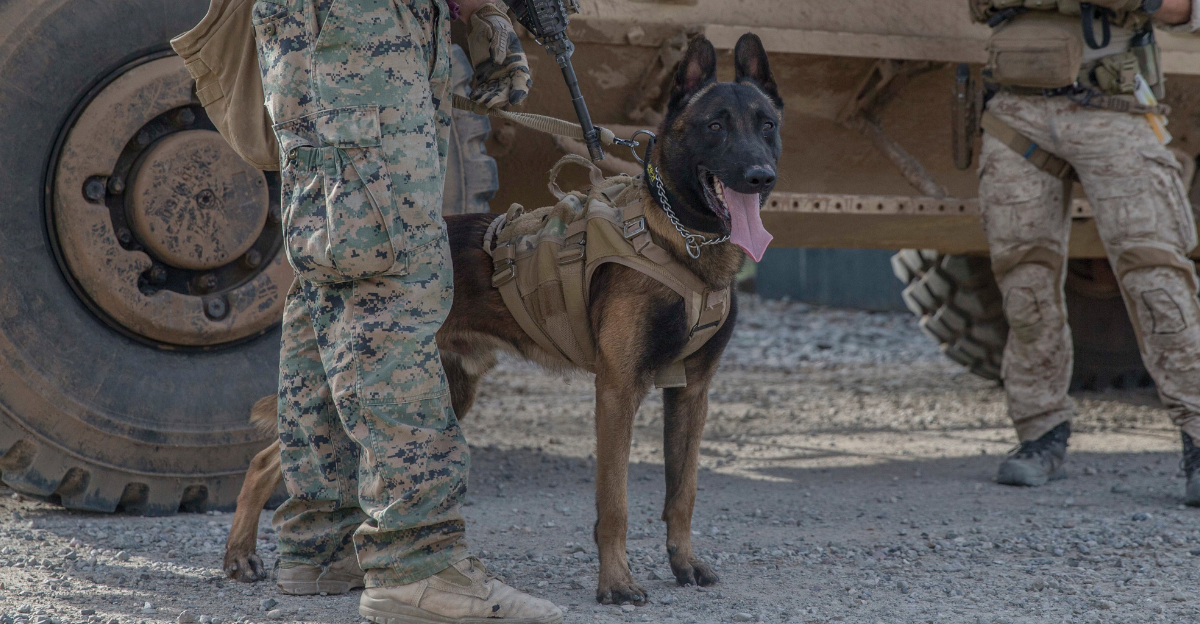
Some missions require jack-of-all-trades dogs for some of the military missions. Multipurpose Canines (MPCs) are trained to perform several tasks, ranging from detection and tracking to seizure.
They are valuable assets because they are able to perform many tasks. Breeds like German Shepherds and Dutch Shepherds are typically chosen for their intelligence and adaptability.
MPCs can easily switch between missions, whether detection of explosives, tracking of suspects, or full-scale combat. Their extensive training and adaptability allow them to fulfill the complex requirements of modern warfare, and they are an invaluable asset on the battlefield.
Conclusion – Paying Tribute to the Unsung Heroes

Military Working Dogs are not merely instruments of war; they are loyal friends, courageous warriors, and unseen heroes. Their value extends far beyond specific roles, each essential to the success and protection of military operations.
From uncovering concealed threats to rescuing people, their value cannot be measured. Technology has not been able to replace their unique abilities. Honoring their service and attending to their well-being is not just a duty but a testament to the close bond between humans and animals—a bond forged in faith, courage, and admiration.
Explore more of our trending stories and hit Follow to keep them coming to your feed!

Don’t miss out on more stories like this! Hit the Follow button at the top of this article to stay updated with the latest news. Share your thoughts in the comments—we’d love to hear from you!







